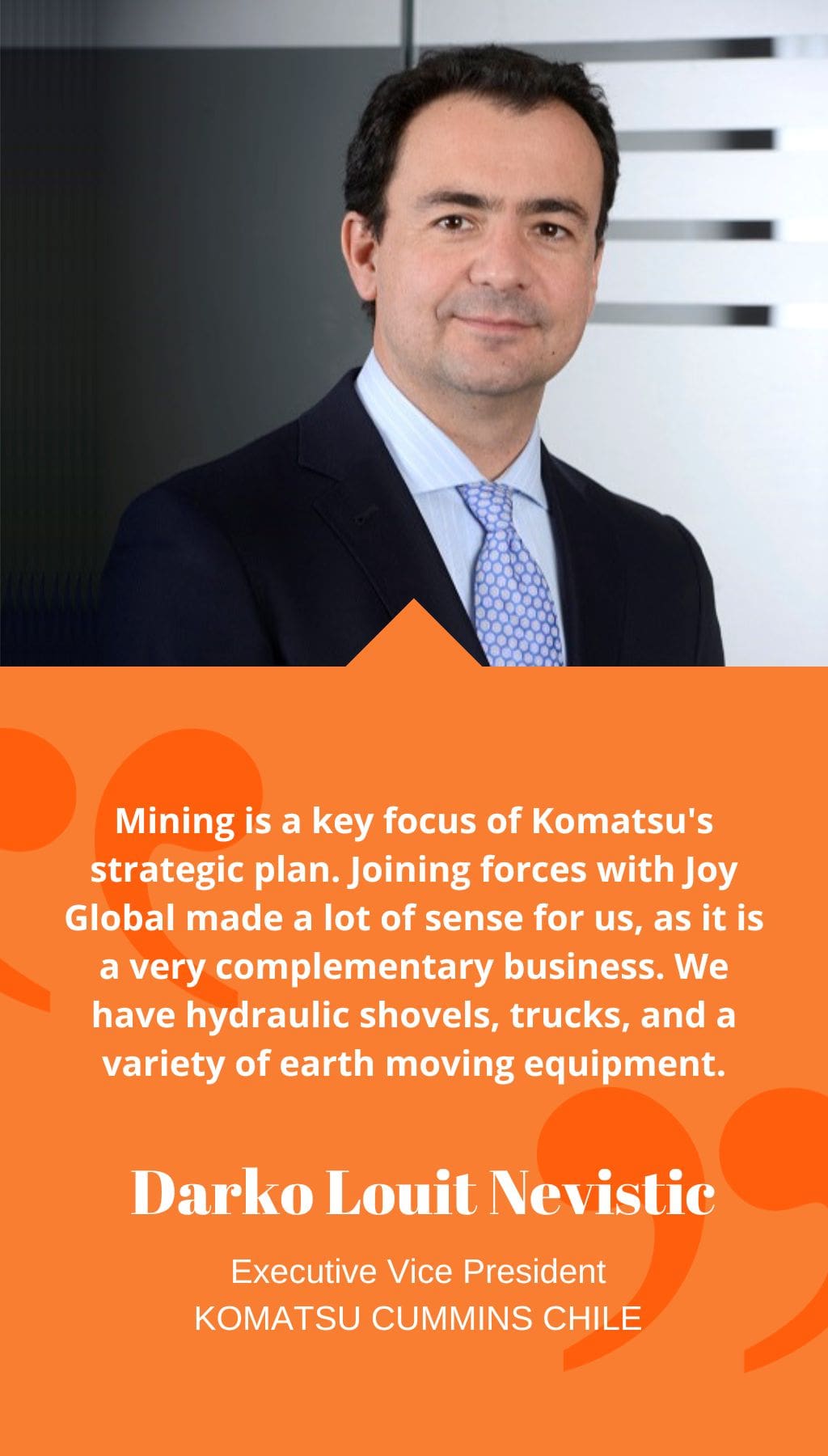
- Chile | 10 June 2022

Can you please give an overview of Komatsu’s presence in Chile?
Certainly. The Komatsu-Cummins joint venture was formed in 1999, and since then, the company has experienced significant growth in market share and volume. As the distributor for both Komatsu and Cummins in Chile, we provide our customers with a wide variety of equipment and services. We also have a rental company with a fleet of over 600 machines, as well as remanufacturing and component repair shops to support our fleets. Overall, we have over 5,000 people across Chile, with a strong focus on training and developing qualified personnel, as 70% of our workforce are technicians. We are heavily invested in improving our capacity, with the construction of a new repair facility here in Santiago nearing completion, representing an investment of around $33 million. Our main market is the mining industry, where we have 20 mining contracts and are present in most of the major mining sites. We see ourselves as a full-service company rather than just an equipment supplier.
How does the acquisition of Joy Global fit into Komatsu’s overall strategy?
Mining is a key focus of Komatsu’s strategic plan. Joining forces with Joy Global made a lot of sense for us, as it is a very complementary business. We have hydraulic shovels, trucks, and a variety of earth moving equipment, while Joy Global provided machines that we did not have, such as drills, rope shovels, large mining loaders, and a full line of underground equipment and conveyor systems. As a result of the Joy Global acquisition (now Komatsu Mining Corporation), we have an even wider range of equipment. The possibility for synergy between the two companies is significant, and we share similar values and a direct-to-customer approach in terms of distribution. We believe that it is a win-win for both companies and the mining industry.
What steps has Komatsu taken toward automation?
Komatsu has been working on automation for many years, leading the development of autonomous haulage systems (AHS) for mining operations. We have deployed autonomous trucks, and today, we have fleets running in Chile, Australia, and Canada. We have operated an AHS at CODELCO’s Gabriela Mistral mine since the end of 2007. Additionally, we have made great advancements in the application of operator assistance methods for construction machinery, such as SMART Construction, which significantly increases productivity on construction sites. Finally, we are also working on ways to remove people from harm’s way via remote operation. We believe that a combination of automated and remotely operated equipment will provide the industry with a safer, more productive environment in the future.
How receptive has the Chilean mining industry been to automation?
At first, it took some visionary customers, like CODELCO in Chile or Rio Tinto in Australia, to endorse the technology and push for its successful application. Many other players in the industry are evaluating this technology, but it has not been a priority for them so far. When you have several fleets running with good results for a long period of time, the industry generally accepts that this is a reliable and working technology. We expect to see significant growth in automation going forward, as there are a lot of benefits in terms of safety and productivity. The obvious benefit of automation is to remove people from harm’s way, resulting in a safer operation, and making operating in remote, harsh locations easier. Additionally, automation is all about reducing variability and improving utilization and productivity, leading to significant productivity gains across our AHS operations globally.














